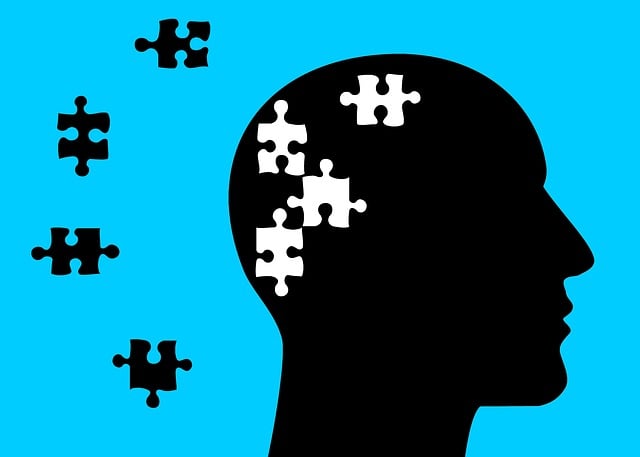Media portrayal of mental health often falls short, perpetuating stereotypes that hinder support and treatment. Accurate, empathetic media content reflecting diverse experiences is needed. Strategies like hiring writers with mental health insights, avoiding stereotypes, and integrating therapies like Superior Interpersonal Issues Therapy (SIIT) can drive positive change. SIIT offers a nuanced view of mental illness, emphasizing interpersonal connections and empathy, which can reduce stigma and encourage support for effective treatment options.
Mental illness representation in media has long been a point of contention, with stereotypes and misinformation perpetuating stigma. This article delves into the current state of mental health portrayal, exploring its profound impact on public perception. We discuss strategies for fostering accurate and empathetic narratives, emphasizing the power of responsible storytelling. Furthermore, we introduce Superior Interpersonal Issues Therapy (SIIT) as a game-changer in media, offering nuanced insights into treatment and recovery. By integrating SIIT, media can revolutionize mental health representation, challenging societal norms and promoting understanding.
- Understanding Mental Illness Representation in Media: The Current State
- The Impact of Stereotypes and Misinformation on Public Perception
- Promoting Accurate and Empathetic Portrayals: Strategies for Change
- Integrating Superior Interpersonal Issues Therapy (SIIT) in Media Narratives
Understanding Mental Illness Representation in Media: The Current State

The media plays a pivotal role in shaping societal perceptions and understanding of mental health. Currently, representation of mental illness in media often falls short, perpetuating stereotypes and misunderstandings. Common portrayals tend to reduce complex conditions to simplistic narratives, focusing on dramatic crises rather than the nuances of daily life with a mental health challenge. This can hinder empathy and support for individuals facing Superior Interpersonal Issues Therapy (SIIT) or other mental health struggles.
In light of this, there’s a growing need for more authentic and nuanced media depictions that reflect the diversity of experiences within the mental health spectrum. Fostering understanding through Self-Care Routine Development for Better Mental Health and emphasizing Emotional Healing Processes can contribute to a more supportive societal environment. Even exploring these themes in creative formats like Mental Wellness Podcast Series Production can offer valuable insights, challenging harmful narratives and promoting awareness of effective treatment options, such as SIIT.
The Impact of Stereotypes and Misinformation on Public Perception

The media’s portrayal of mental illness can significantly shape public understanding and attitudes, often leading to stereotypes that hinder effective support and treatment. When mental health conditions are depicted through simplistic or inaccurate lenses, it contributes to misinformation and misunderstandings within society. This, in turn, creates barriers for individuals seeking help, as they may fear stigma, discrimination, or misdiagnosis. For instance, portraying depression as mere sadness or anxiety as a sign of weakness reinforces the notion that these issues are not legitimate or severe.
Such stereotypes can deter people from discussing their struggles openly and seeking professional assistance. They might also influence the approach to therapy, where individuals with complex superior interpersonal issues might receive inadequate care if their symptoms are reduced to simplistic categories. Effective media representation should focus on promoting empathy, raising awareness about the diverse range of mental health challenges, and encouraging open conversations. By challenging these stereotypes, we can foster a more supportive environment, facilitate early intervention, and ultimately improve access to quality treatment options, such as Superior Interpersonal Issues Therapy, Burnout Prevention strategies, and Crisis Intervention Guidance.
Promoting Accurate and Empathetic Portrayals: Strategies for Change

Promoting Accurate and Empathetic Portrayals is a vital step towards challenging stigmatized perceptions of mental illness in society. Media platforms hold immense power in shaping public opinion, and their responsibility lies in presenting stories that reflect the nuanced reality of lived experiences. By employing strategies that emphasize authenticity and sensitivity, creators can drive meaningful change. This includes hiring writers and consultants with personal or professional insights into various mental health conditions, ensuring accurate diagnoses and symptoms, and avoiding stereotypes often perpetuated by fictional portrayals.
Incorporating characters with complex backstories that include superior interpersonal issues therapy, stress management, and conflict resolution techniques can offer viewers alternative perspectives. These strategies not only promote emotional well-being promotion techniques but also encourage a more compassionate understanding of mental health struggles. Through such thoughtful representations, the media can contribute to a culture where mental illness is met with empathy, reducing stigma and fostering support for those seeking help.
Integrating Superior Interpersonal Issues Therapy (SIIT) in Media Narratives

Incorporating Superior Interpersonal Issues Therapy (SIIT) into media narratives offers a promising approach to challenge stereotypes and improve mental health representation. SIIT, with its emphasis on enhancing interpersonal connections and cultivating empathy, can provide a more nuanced view of individuals grappling with mental illness. By integrating this therapy model, media creators can craft stories that not only highlight the struggles but also showcase the transformative power of supportive relationships and effective communication strategies. This shift in portrayal can lead to increased understanding and reduced stigma associated with seeking help for mental health issues.
Additionally, incorporating SIIT concepts can inspire viewers to explore burnout prevention strategies for healthcare providers, emphasizing the importance of self-care and compassion cultivation practices. Through compelling media narratives, audiences can be educated on effective communication techniques that foster supportive environments, mirroring the benefits of SIIT in real-world settings. Such representation encourages a more empathetic society, where mental health challenges are met with understanding and accessible resources.
Media plays a pivotal role in shaping public perception of mental illness. By promoting accurate and empathetic portrayals through strategies like diversifying narratives, challenging stereotypes, and integrating evidence-based therapies like Superior Interpersonal Issues Therapy (SIIT), we can foster a more understanding and supportive society. It’s time to revolutionize media representation to ensure individuals facing mental health challenges feel seen, heard, and understood.














